What is a star and a triangle in an electric motor
The entire load in three-phase circuits is connected in a star or delta circuit. Depending on the type of consumers of electricity and voltage in the mains, they select the appropriate option. If we talk about electric motors, then the possibility of its operation in a particular network with rated characteristics depends on the choice of connection of the windings. In the article we will consider how the star and the triangle in the electric motor differ, what they influence and what the principle of connecting the wires in the terminal block of the three-phase motor.
Theory
As already mentioned, the star and triangle connection schemes are characteristic not only for the electric motor, but also for the transformer windings, heating elements (for example, electric boiler heating elements) and other loads.
To understand why these schemes for connecting elements of a three-phase circuit are so called, you need to modify them somewhat.
In the "star", the load of each of the phases is interconnected by one of the conclusions, this is called the neutral point. In the “triangle”, each of the load terminals is connected to unlike phases.
Everything stated in the article is further valid for three-phase asynchronous and synchronous machines.
Consider this issue on the example of the connection of the windings of a three-phase transformer or three-phase motor (in this context, it does not matter).
In this figure, the differences are more noticeable, in the "star" the beginning of the windings are connected to phase conductors, and the ends are connected together, in most cases a zero wire from the supply generator or transformer is connected to the same load point.
The dot indicates the beginning of the windings.
That is, in the "triangle" the end of the previous winding and the beginning of the next are connected, and the supply phase is connected to this point. If you confuse the end and the beginning, the connected machine will not work.
What is the difference
If we talk about connecting single-phase consumers, we will briefly analyze the example of three electrotenes, then in the “star”, if one of them burns out, the two remaining ones will continue to work. If two of the three burns out, none will work at all, since they are connected in pairs to a linear voltage.
In the triangle circuit, even when 2 ten elements burn out, the third one will continue to work. There is no neutral wire in it, there is simply nowhere to connect it. And in the “star” it is connected to the neutral point, and it is needed to equalize the phase currents and their symmetry in case of different phase loads (for example, 1 heater is connected in one of the branches, and 2 in parallel for the others).
But if at such a connection (with a different phase load) it burns out zero, then the voltages will not be the same (where more load sags, and where less - increases). We wrote more about this in the article on phase imbalance.
It should be borne in mind that it is impossible to connect ordinary single-phase devices (220V) between phases, at 380V.Either the devices must be designed for such power, or the network must be with a linear 220V (as in electric networks with isolated neutral some specific objects, for example, ships).
But, with connecting a three-phase motor, zero is often not connected to the midpoint of the star, since this is a symmetrical load.
Power, Current, and Voltage Formulas
To begin with, there are two different voltages in the star circuit - linear (between linear or phase wires) and phase (between phase and zero). U linear 1.73 (root of 3) times larger than U phase. In this case, the linear and phase currents are equal.
UL = 1.73 * Uph
Il = If
I.e line and phase voltage correlate so that when linear in 380V, phase is 220V.
In the "triangle", the U-linear and U-phase are equal, and the currents differ by 1.73 times.
Ul = Uf
IL = 1.73 * IF
Power in both cases, consider the same formulas:
- full S = 3 * Sph = 3 * (Ul / √3) * I = √3 * Ul * I;
- active P = √3 * Ul * I * cos φ;
- reactive Q = √3 * Ul * I * sin φ.
When connecting the same load to the same U-phase and U-linear, the power of the connected devices will differ by 3 times.
Suppose there is an engine that runs on a three-phase 380/220 V network, and its windings are designed to be connected via a "star" to the mains with a linear voltage of 660 V. Then, when connected to the “triangle”, the U-line supply should be 1.73 times less, that is, 380V, which is suitable for connecting to our network.
We will give calculations to show what differences will be for the motor when switching the windings from one circuit to another.
Suppose that the stator current when connected to a triangle in a 380V network was 5A, then its full power is equal to:
S = 1.73 * 380 * 5 = 3287 VA
Switch the electric motor to the “star” and the power will decrease by 3 times, since the voltage on each winding decreased 1.73 times (it was 380 per winding, but became 220), and the current is also 1.73 times: 1.73 * 1 , 73 = 3. So, taking into account the reduced values, we will calculate the total power.
S = 1.73 * 380 * (5/3) = 1.73 * 380 * 1.67 = 1070 VA
As you can see, the power dropped 3 times!
But what will happen if there is another electric motor and it worked in the “star” in the 380V network and the stator current is in the same 5A, respectively, and the windings are designed to be connected to the “triangle” for 220V (3 phases), but for some reason they connected in a "triangle" and connected to 380V?
In this case, the power will increase 3 times, since the voltage on the winding is now vice versa increased by 1.73 times and the current is the same.
S = 1.73 * 380 * 5 * (3) = 9861 VA
Engine power has become more than nominal at the same 3 times. So it just burns!
Therefore, it is necessary to connect the electric motor according to the winding connection scheme that corresponds to their rated voltage.
Practice - how to choose a scheme for a specific case
Most often, electricians work with a 380 / 220V network, so let's look at how to connect, with a star or a triangle, an electric motor to such a three-phase electric network.
In most electric motors, the connection diagram of the windings can be changed, for this there are six terminals in the brno, they are arranged so that with the help of a minimum set of jumpers you can assemble the circuit you need. In simple words: the conclusion of the beginning of the first winding is located above the end of the third, the beginning of the second, above the end of the first, the beginning of the third above the end of the second.
How to distinguish two options for connecting an electric motor you see in the figure below.
Let's talk about which scheme to choose. The connection scheme of the motor coils does not have a special effect on the engine operating mode, provided that the rated parameters of the motor correspond to the mains. To do this, look at the nameplate and determine what voltage your electric machine is specifically designed for.
Typically, the marking has the form:
Δ / Y 220/380
This stands for:
If the interfacial voltage is 220, collect the windings in a triangle, and if 380 - in a star.
To simply answer the question "How to connect the windings of the motor?" we have made a selection chart for you for the connection diagram:
Star-delta switching for a smooth start
When the motor starts, high inrush currents are observed. Therefore, to reduce the starting currents of induction motors, a starting circuit is used with the windings switched from star to delta. At the same time, as mentioned above, the electric motor must be designed to connect to the "triangle" and work under the linear your network.
Thus, in our three-phase power networks (380 / 220V), for such cases, motors rated at "380/660" Volts are used, for "Δ / Y", respectively.
When starting, the windings are switched on by a "star" at a reduced voltage of 380V (relative to the rated 660V), the motor starts to gain speed and at a certain point in time (usually by timer, in complicated cases - by the signal of current and speed sensors), the windings switch to a "triangle" and work already at their rated 380 volts.
The illustration above describes such a method of starting the engines, but as an example, a changeover switch is shown, in practice, two additional contactors (KM2 and KM3) are used, although it is more complicated than the usual circuit for connecting an electric motor, it is not its drawback. But she has a number of advantages:
- Less load on the mains from inrush currents.
- Accordingly, lower voltage drops and the likelihood of stopping related equipment is reduced.
- Soft start of the engine.
There are two main disadvantages of this solution:
- It is necessary to lay two three-core cables from the location of the contactors directly to the motor terminals.
- Starting torque drops.
Conclusion
As such, there are no differences in performance when connecting the same electric motor according to the star or triangle scheme (it will simply burn if you make a mistake when choosing). As well as there are no advantages and disadvantages of any of the schemes. Some authors cite the argument that the current in the "star" is less. But with the same power of two different engines, one of which is designed to be connected in a "star", and the second in a "triangle" to the network, for example, 380V, the current will be the same. And one and the same engine cannot be switched “haphazardly” and “it is not clear for what”, since it simply burns out. The main thing is to choose the option that corresponds to the voltage of the mains.
We hope that now you have become more clear about what a star and a triangle circuit in an electric motor are, what is the difference in connecting each of the methods and how to choose a circuit for a particular case. We hope the information provided was useful and interesting for you!
Related materials:

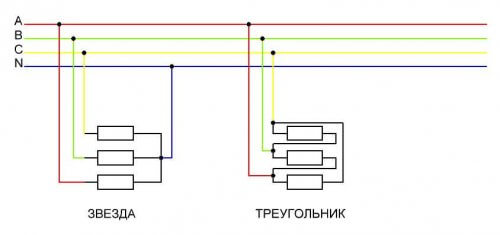
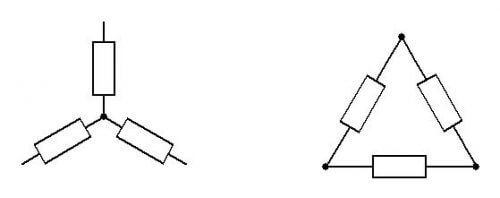
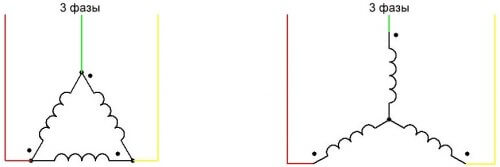
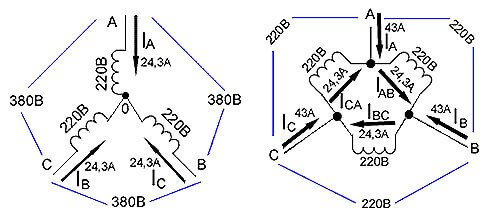
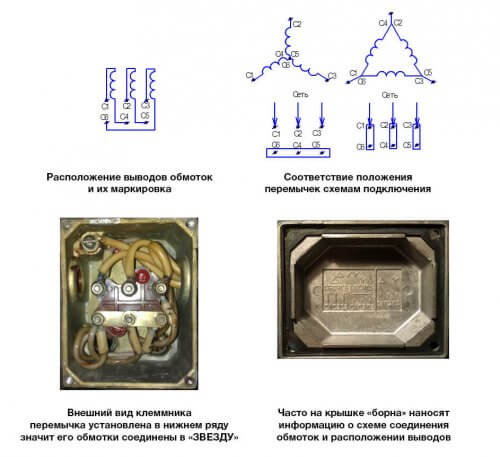

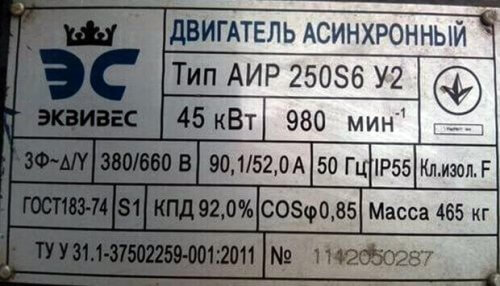
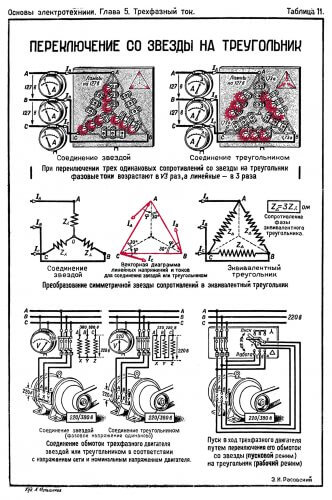
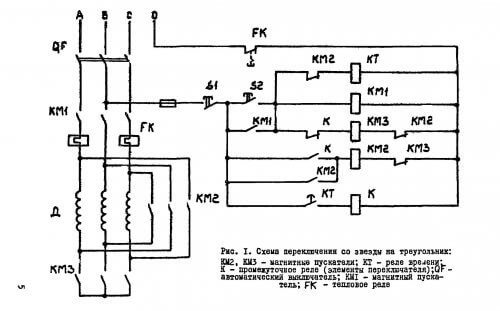

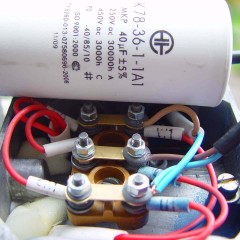
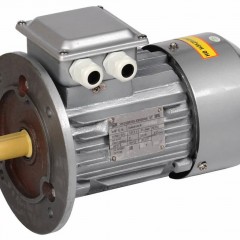
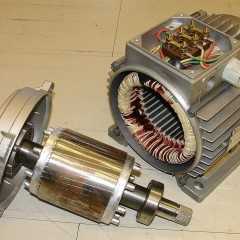

It was very, very helpful and by the way !!!
Thank you very much and Irad.
Explained to people who have already read the TOE, for the average person there will be a lot of things that are not clear.